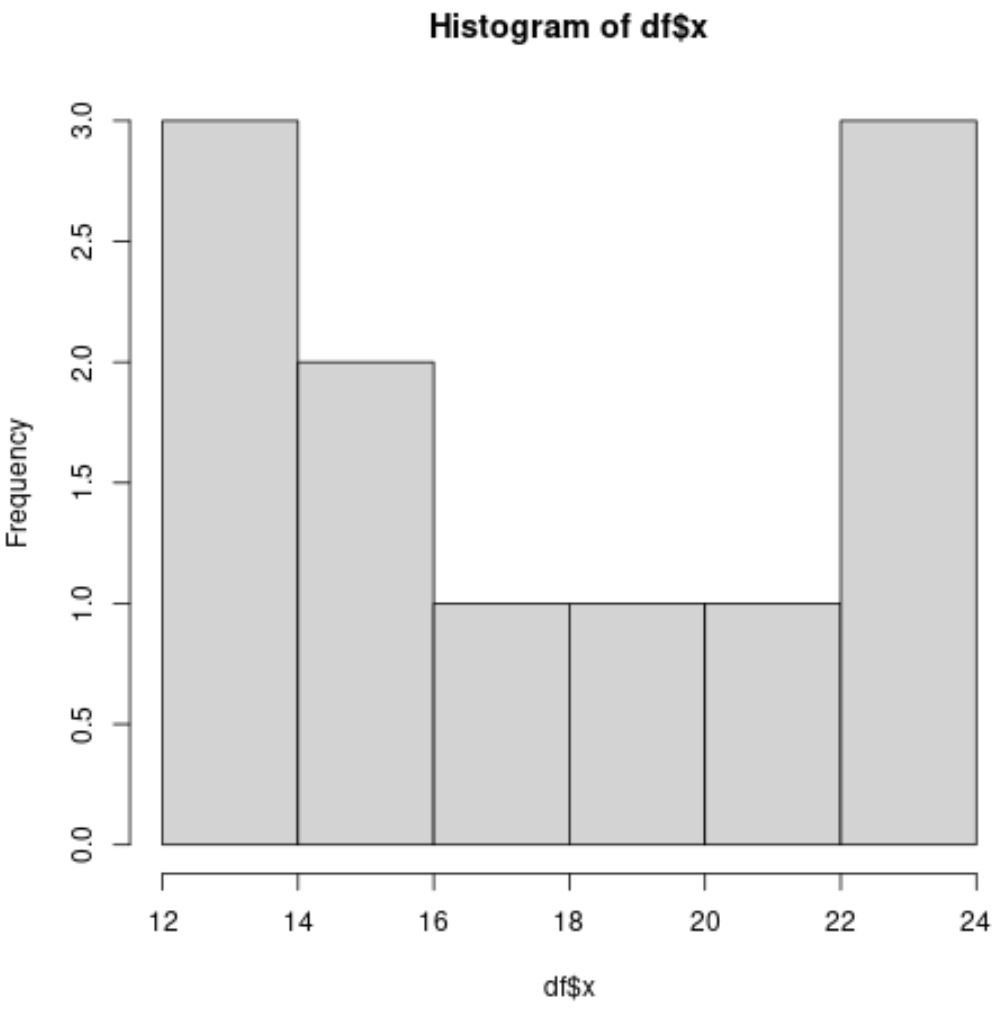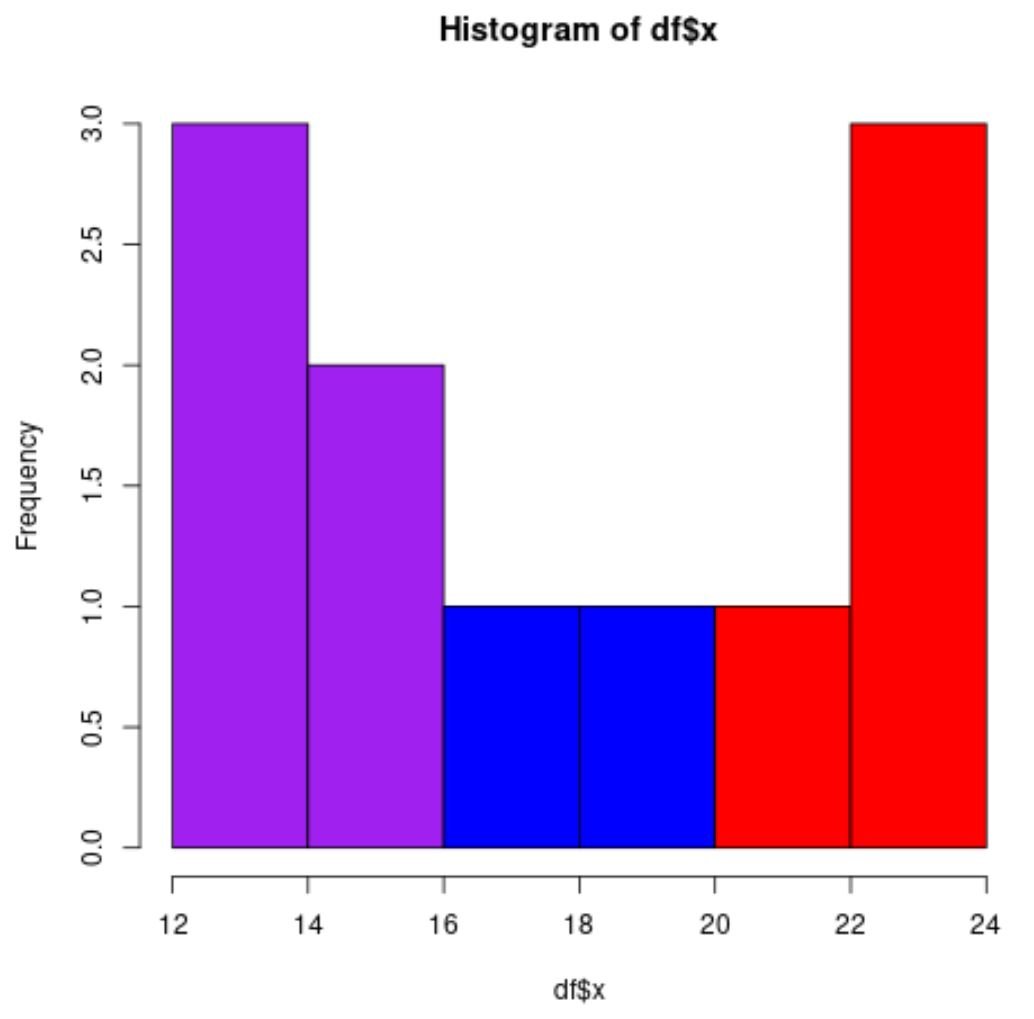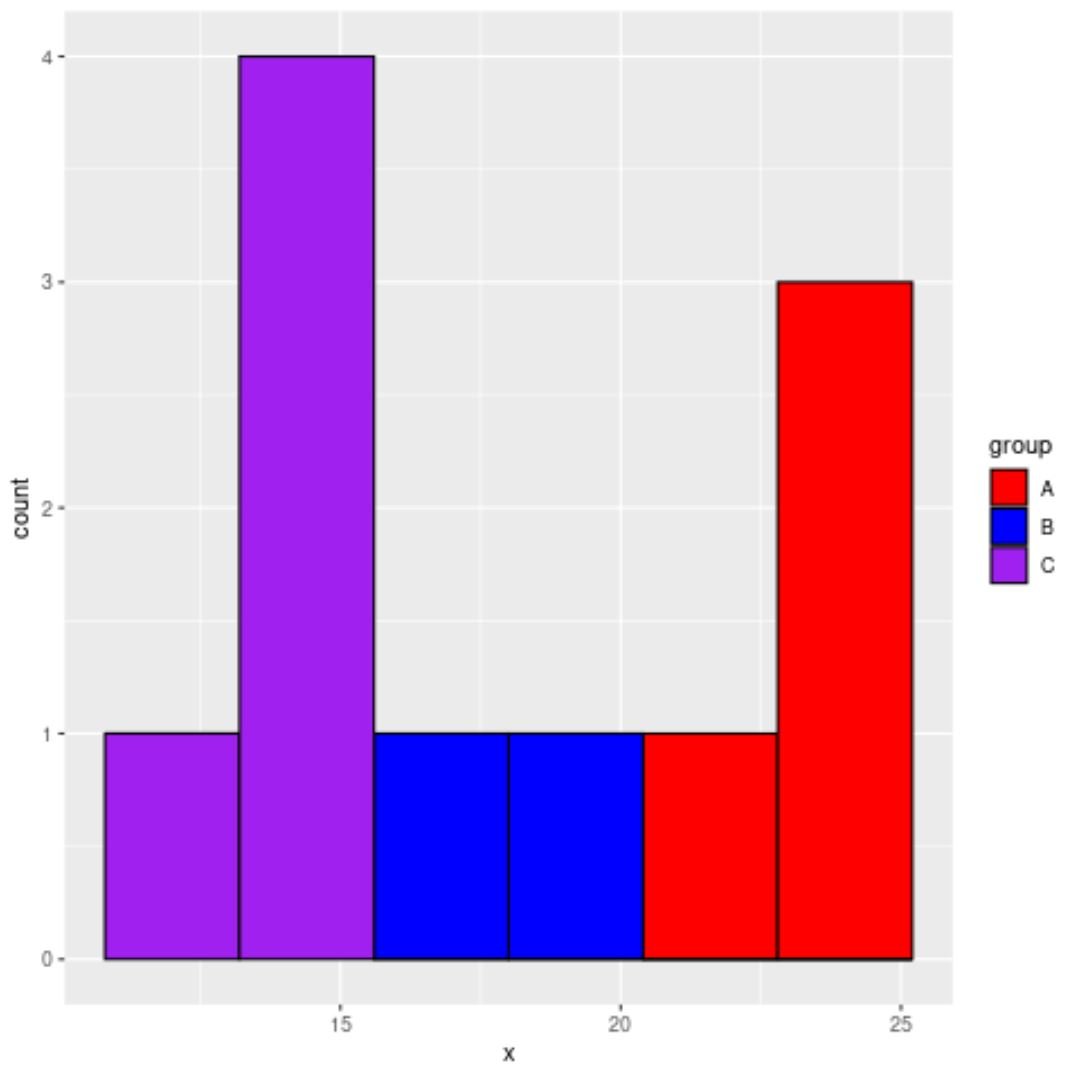Often you may want to create a histogram that has several different colors in R.
The following examples show how to do so in base R and in ggplot2.
Example 1: Histogram with Different Colors in Base R
The following code shows how to create a histogram with just one color in base R:
#create data frame df frame(x=c(12, 14, 14, 15, 15, 17, 19, 22, 23, 23, 24)) #create histogram hist(df$x)
By default, all of the colors of the bars are the same in the histogram.
However, we can use the following code to create a histogram with three different colors:
#create data frame df frame(x=c(12, 14, 14, 15, 15, 17, 19, 22, 23, 23, 24)) #define histogram break points hist_breaks #define colors to use in histogram based on break points color_list red', length(hist_breaks)) color_list[hist_breaks 20] blue' color_list[hist_breaks 16] purple' #create histogram with custom colors hist(df$x, col=color_list)
Here’s how the logic worked to create the three colors:
- First, we specified every bar to be red.
- Then, we changed every bar with a break point less than 20 to be blue.
- Then, we changed every bar with a break point less than 16 to be purple.
The end result is a histogram with three colors.
Example 2: Histogram with Different Colors in ggplot2
Suppose we have the following data frame in R:
#create data frame df frame(x=c(12, 14, 14, 15, 15, 17, 19, 22, 23, 23, 24)) #view data frame df x 1 12 2 14 3 14 4 15 5 15 6 17 7 19 8 22 9 23 10 23 11 24
To create a histogram with different colors for this data frame, we need to first create a grouping variable for the values using a nested if else statement:
#create grouping variable df$group = ifelse(df$x 16, 'C', ifelse(df$x 20, 'B', 'A')) #view updated data frame df x group 1 12 C 2 14 C 3 14 C 4 15 C 5 15 C 6 17 B 7 19 B 8 22 A 9 23 A 10 23 A 11 24 A
Now we can create a histogram in ggplot2 and define the colors in the plot using the group variable:
#create histogram with custom colors
ggplot(df, aes(x, fill=group)) +
geom_histogram(bins=6, color='black') +
scale_fill_manual(values = c('A' = 'red',
'B' = 'blue',
'C' = 'purple'))
The end result is a histogram with three colors.
Note: You can find the complete documentation for scale_fill_manual() here.
Additional Resources
The following tutorials explain how to perform other common operations in R:
How to Create a Relative Frequency Histogram in R
How to Overlay Normal Curve on Histogram in R
How to Specify Histogram Breaks in R





